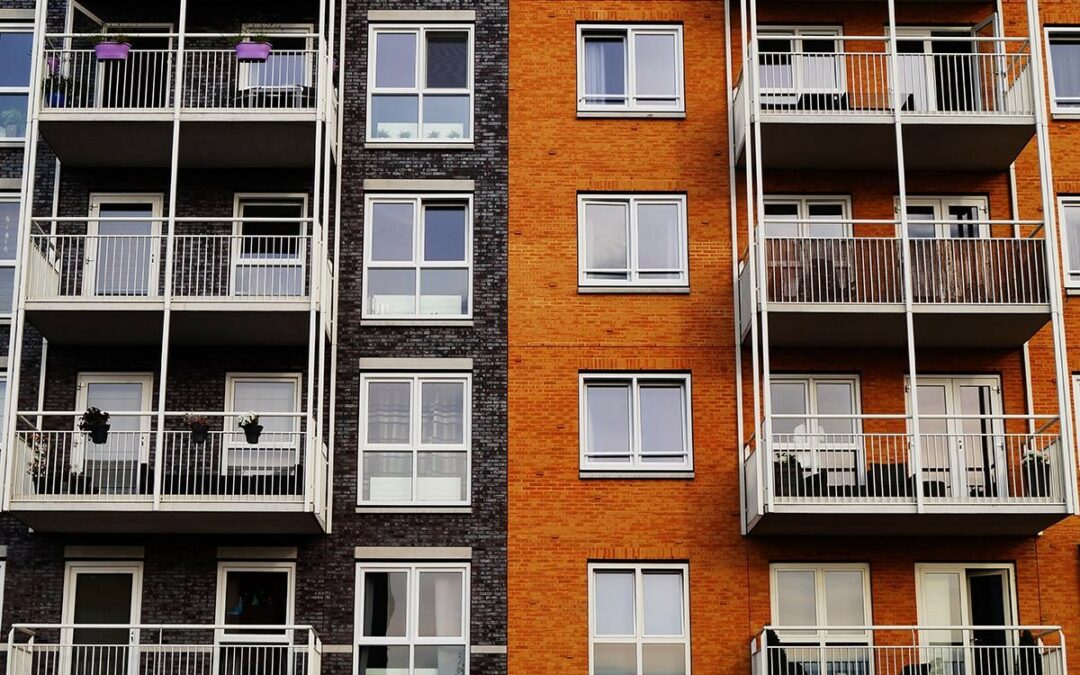Ensuring fire safety compliance in residential buildings is very important. High-rise, midrise, and low-rise buildings each possess unique architectural characteristics that significantly impact fire safety measures and requirements. Understanding the differences in fire safety compliance among these building types is essential for implementing effective strategies to protect occupants.
High-Rise Residential Fire Safety Compliance
High-rise residential structures, typically defined as residential buildings with six or more floors, demand specialized fire safety measures due to their height and increased occupancy. Below are the main features of fire safety compliance in high-rise buildings.
Vertical evacuation challenges
Conventional evacuation methods are less effective for high-rise building fires. The focus here is ensuring efficient vertical evacuation, particularly from the upper floors. Well-designed, pressurized stairwells, fire-resistant materials and fire-rated doors are required to prevent fires in high rise buildings from spreading to multiple floors. Emergency communication systems and comprehensive evacuation plans are needed for safe and orderly evacuation.
Advanced fire suppression systems
Most high-rise buildings implement sophisticated fire suppression systems, including automatic sprinklers, smoke control systems and an interconnected fire alarm system that covers the entire structure. Additionally, if a fire broke out, these buildings often incorporate backup power sources to make sure the fire safety features work in case of a power outage.
Stringent regulatory compliance
Given the higher risks associated with tall buildings, high-rise structures are subject to more stringent fire safety regulations. Regular inspections, strict adherence to building codes, certifications and frequent fire drills are needed for compliance and safety in these buildings.
Mid-Rise Residential Fire Safety Compliance
Mid-rise residential buildings, generally consisting of four to six floors, present distinct challenges and requirements for fire protection compliance compared to high-rise and low-rise structures. Below are the key differences in mid-rise building fire safety compliance.
Balancing evacuation and structural design
Mid-rise buildings must find a balance between evacuation concerns and structural design elements. Evacuation plans are crucial but often more manageable than high-rise buildings due to lesser height. These structures emphasize accessible exits, fire-resistant materials and adequate fire containment strategies.
Standard fire suppression systems
While mid-rise buildings might not require the complex systems needed in high-rises, they do have standard fire safety equipment, including smoke detectors, fire extinguishers and sprinkler systems that focus on localized fire suppression.
Regulatory compliance
Mid-rise buildings adhere to local building codes and regulations, but their requirements often fall between those of high-rise and low-rise structures. Inspections and adherence to safety standards are important, although with specifications that are designed to fit their scale and occupancy.
Low-Rise Residential Fire Safety Compliance
Low-rise residential buildings, typically up to three floors, also have unique fire safety compliance requirements.
Multiple exits and simpler design
Low-rise buildings utilize multiple exits, fire-resistant materials and simpler design elements, usually offering more straightforward evacuation routes due to their reduced height.
Basic fire suppression systems
Fire safety measures include fire extinguishers, smoke detectors and fire-resistant construction materials to contain and prevent fires from spreading within the building.
Local regulatory oversight
Compliance in low-rise buildings is regulated by local building codes and standards, often with less complexity compared to high-rise or midrise structures.
High-rise, midrise, and low-rise residential buildings each present distinct challenges and necessitate specific fire safety measures tailored to their structural designs, evacuation requirements, and regulatory expectations. Understanding the differences in these measures is imperative when creating effective fire safety strategies for the protection and well-being of residents.
Choose Firecode Safety Equipment, Sacramento’s Residential Building Fire Protection Expert
Sacramento residential property managers and owners looking for comprehensive and reliable fire protection solutions should consider Firecode. With a proven track record of excellence, we stand out as the premier choice due to our commitment to top-notch, compliant and efficient fire protection solutions. This includes cutting-edge fire suppression systems, advanced detection technologies and expert consulting services that cater specifically to residential property needs. Contact us today to get started.


Recent Comments